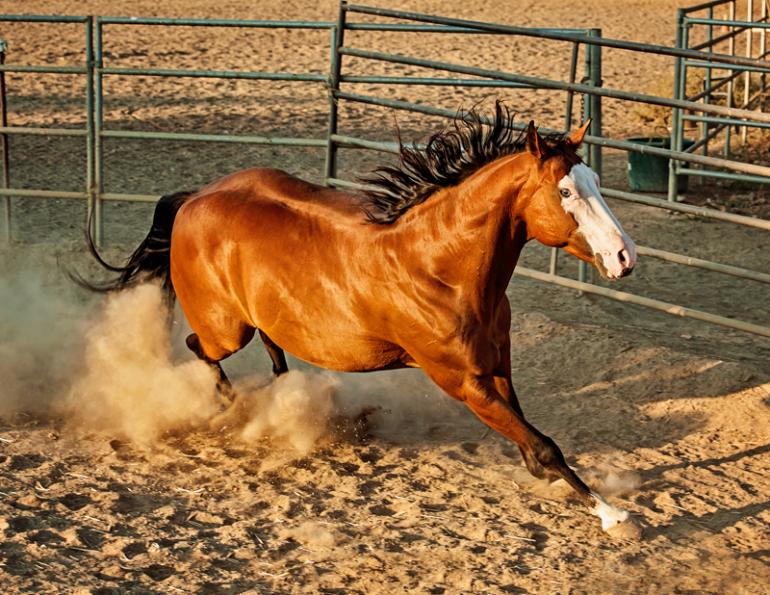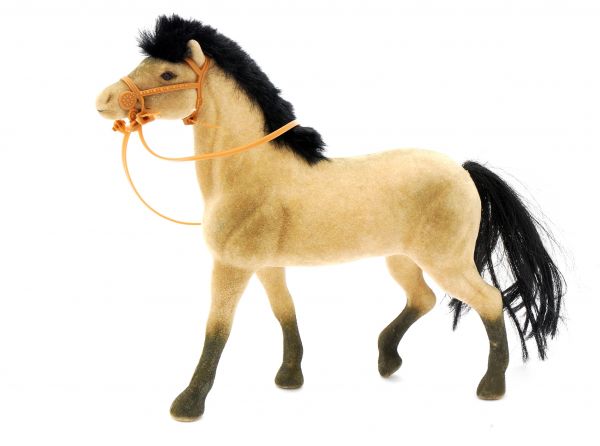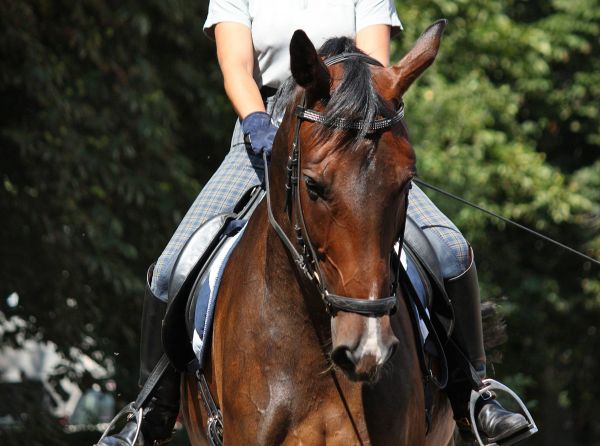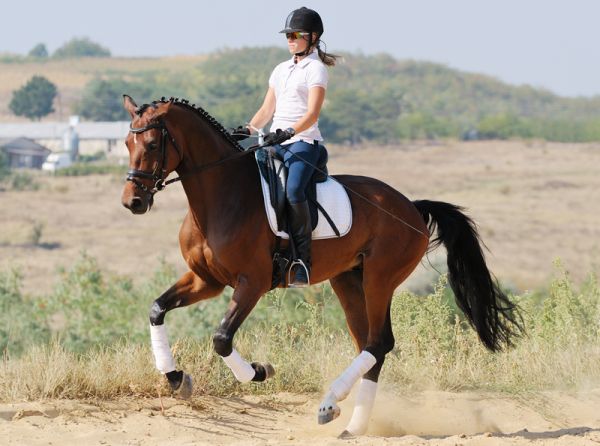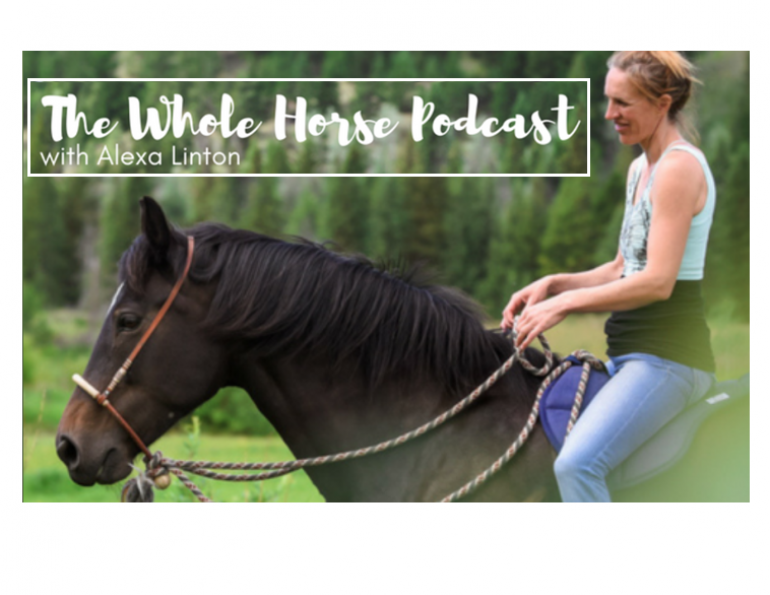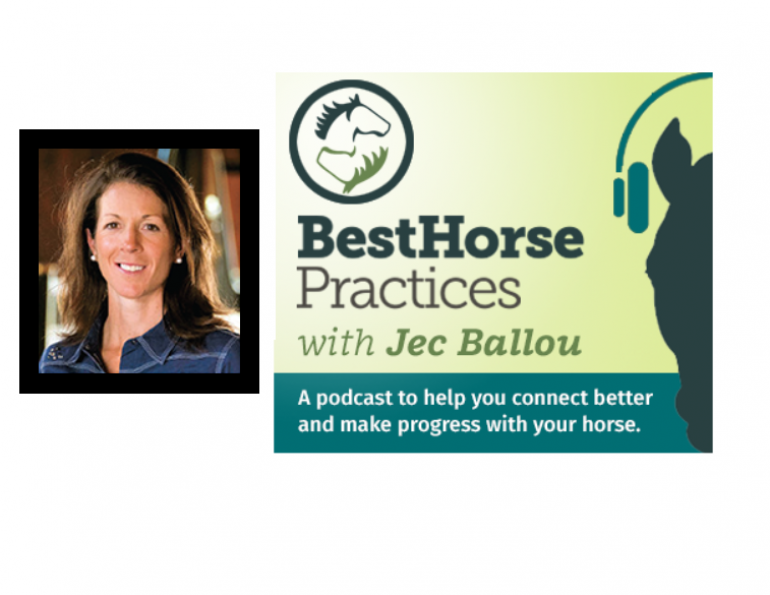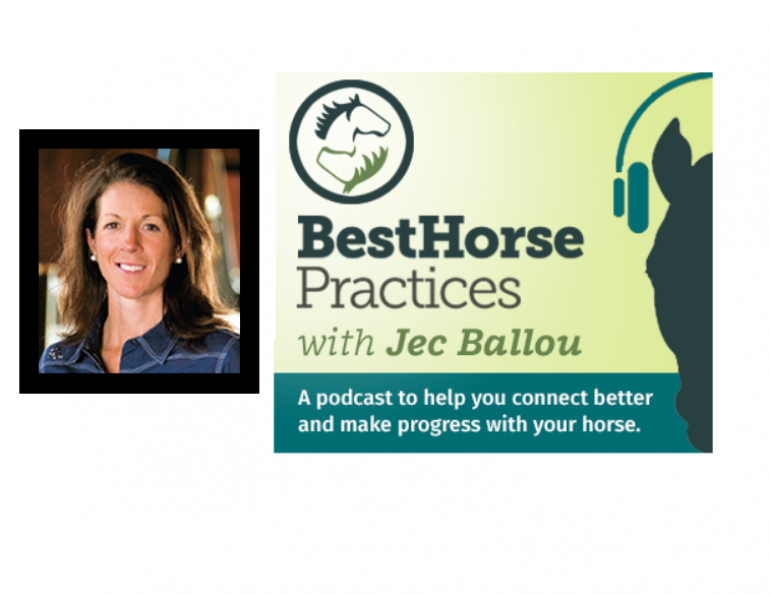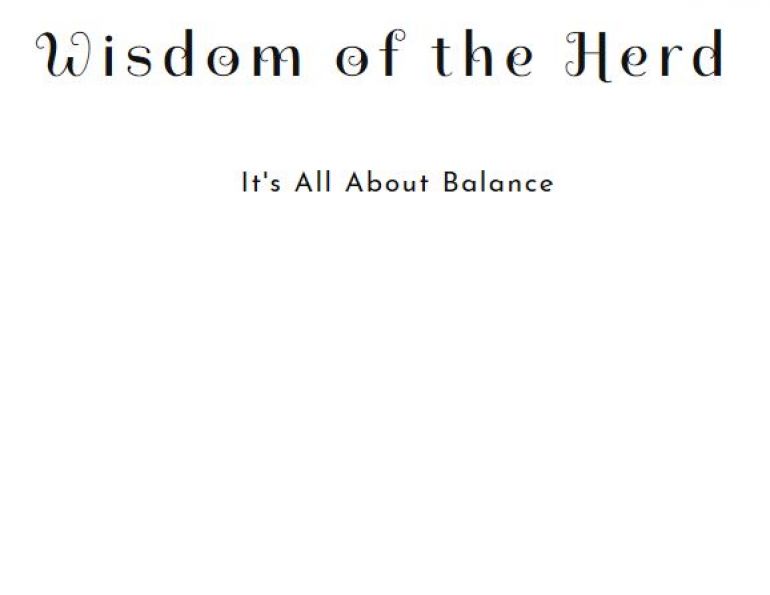By Jec Ballou
Believe me when I tell you that I love freedom as much as anyone. I love trimming away boundaries, living widely in each moment. And yes, I love to watch a beautiful horse running free across a meadow with his legs surging and his expression content. That, to me, is a wonderful sight. On the other hand, a horse careening around a round pen with his neck twisted sideways and his body misaligned disgruntles me.
The reason it disgruntles me is that this practice forms — and strengthens — poor movement mechanics that can have pretty significant consequences. Primarily, when a horse travels around the round pen with his head turned slightly to the outside of the circle, he ends up catching his balance every stride by planting his inside foreleg harder. This tightens and strengthens his shoulder girdle on that side, and embeds crookedness in addition to limited range of motion in the scapula.
When a horse has spent a fair amount of time in this incorrect balance, results can include chronically cross-cantering, balky behaviour under saddle, stiffness, and lack of responsiveness to the rider’s leg cues when ridden. The problem is that the undesirably tight scapula muscles contributing to these problems have been made stronger by the round pen work.

Many horse people enjoy liberty work, but the round pen should not be used simply to chase around a loose horse at the risk of ingraining postural imbalances. Photo: Flickr/Dianne White
I absolutely believe that round pen work has a valuable place in every horse’s training life. Much of the value comes from body alignment. The round pen is not a place to chase around a loose horse while ingraining poor habits. Unless you can 100 percent affirm that your horse’s ENTIRE spine (head to tail) follows the curve of the circle prescribed by your round pen, then you are far better off to have a line attached to his halter or cavesson or bridle.
Any exercise undertaken without a complete inwards arc of the horse’s spine to match his line of travel creates postural imbalances that become stronger each session. These imbalances are manmade and easily avoided.
Somewhere along the way, many of us have become besotted with liberty work, or exercising the horse without any reins, lunge lines, etc. Liberty work IS a delightful concept, but it often comes with irony. The irony appears when students wish to change a particular movement pattern (i.e., fix a canter lead, solve a persistent crookedness) without realizing that their liberty work has contributed greatly to the problem they wish to resolve.
When it comes with the outcome of developing comfortable and functional posture for your horse, attaching a line is a gift we can offer him. It allows you to guide the horse to correct posture inside the round pen, enabling his inside scapula to rotate upwards and back each stride, which in turn allows his topline to lift and swing.
Sure, there is a small percentage of horses with fine training and balance that are able to work at liberty in a round pen while maintaining correct posture and bend. In these wonderful cases, there may be no need whatsoever to have the horse on a line. But let’s not be overly generous in our self-assessments. Far fewer of us are in this camp than we might wish to accept. A closer look at most horses in round pens reveals the horse’s head turned slightly outside the circle, and to that I say: Put on a line. Allow your horse to experience his freedom in other ways, but not at the expense of solidifying poor balance.
Main photo: Shutterstock/Horse Crazy



